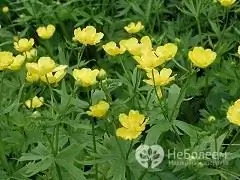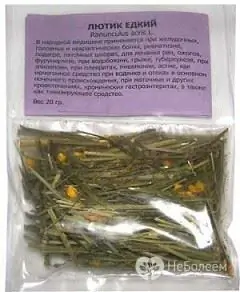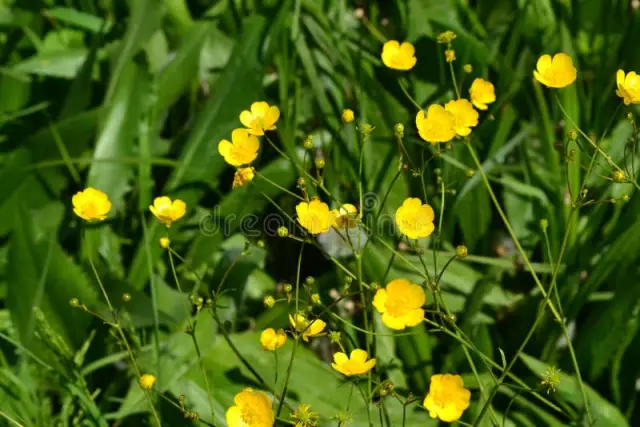- Author Rachel Wainwright [email protected].
- Public 2023-12-15 07:39.
- Last modified 2025-11-02 20:14.
Caustic buttercup
Instructions for use:
- 1. Application
- 2. Harm from use

The caustic buttercup is a plant that belongs to the Buttercup family. There are many popular names for caustic buttercup, among which are oil flower, gouty herb and burning herb. In pharmacies it is sold under the name "Buttercup herb".
The plant's rhizome is short and thickened, and erect stems develop from it, which can reach a height of 30 to 100 cm. Such plants are branching, weakly descended and hollow. Bright golden yellow flowers are located at the ends of the branches. Buttercup leaves can look different.
Stem leaves have a simpler structure, they are sessile and have linear lobes. The flowering period of the grass is May-June.
Basal leaves "sit" on long petioles and are 5-7-finger-separated. Buttercup is especially common in meadows. By the way, its bright flowers do not please the peasants at all, because the plant is poisonous, which is especially bad for grazing livestock.
Substances lose their caustic power only in dried form, which is why hay containing caustic buttercup is safe for livestock.
Application
Only the aerial part of the plant is used, which is only effective when freshly harvested. It is worth noting that in traditional medicine, different types of buttercups are not distinguished, which have a similar appearance.
The most important active substance, which is caustic in buttercup, is protoanemonin, which causes an irritating effect on mucous membranes and on the skin. Other beneficial substances of this plant include vitamin C, tannins, asponins, arginine and asparagine. These substances are found not only in the caustic buttercup, but also in all species of this plant.
Buttercup caustic is not used in official medicine!
Buttercup has found application in homeopathy. So, for example, a bulbous remedy, which is made from buttercup, has a good effect on irritation of the mouth, nose and eyes, as well as pain in the chest area (these can be pains of any kind - from tingling sensations to difficulty breathing). Buttercup is used to relieve muscle pain. It copes well with skin rashes, even pustules.

All types of yellow buttercups are widely recognized in folk medicine. The most famous is the burning effect of this herb. Even if you just pick a flower, bubbles may appear on your hands. Unfortunately, alternative medicine still finds application in fresh leaves of caustic buttercup, but experts categorically do not recommend trying at least one method of alternative treatment.
Traditional medicine uses caustic buttercup to treat neuralgic and headaches, wounds, furunculosis, gout, rheumatism, and burns. Although the main substance contained in buttercup is caustic (protoanemonin) and toxic, in small doses it can stimulate the activity of the nervous system and increase the number of red blood cells.
For example, thinly sliced buttercups infused with milk can be a good laxative for severe constipation.
Even the French court physician under Ferdinand I determined the external and internal use of flowers for warts.
Harm from use
As mentioned above, fresh buttercup herb is poisonous. The caustic substances that make up the plant, when applied externally, can irritate the mucous membranes and skin. Once inside, the herb irritates the intestines and stomach, causing colic and diarrhea. To somehow cope with the negative effects of poisoning, you must first induce vomiting, and then be sure to take activated charcoal. All further care of the poisoned person should be assigned to the doctor. By the way, external skin lesions can pass without traces.
Information about the drug is generalized, provided for informational purposes only and does not replace the official instructions. Self-medication is hazardous to health!






